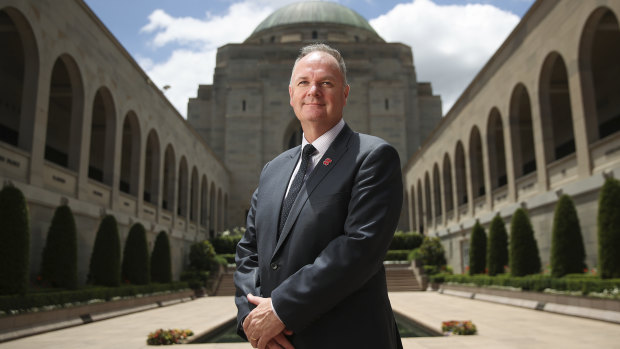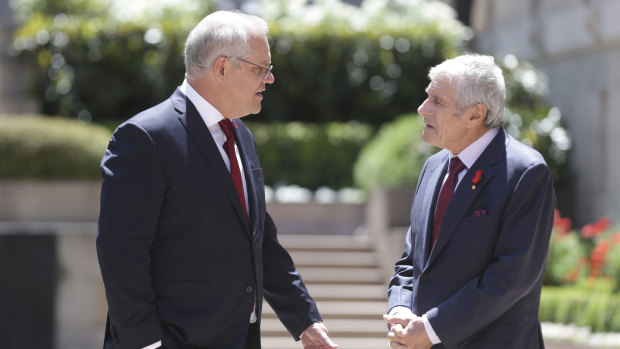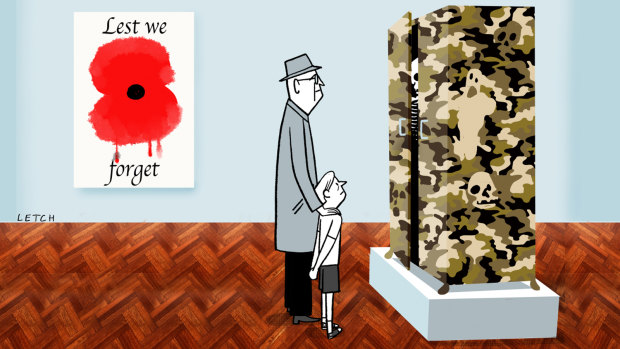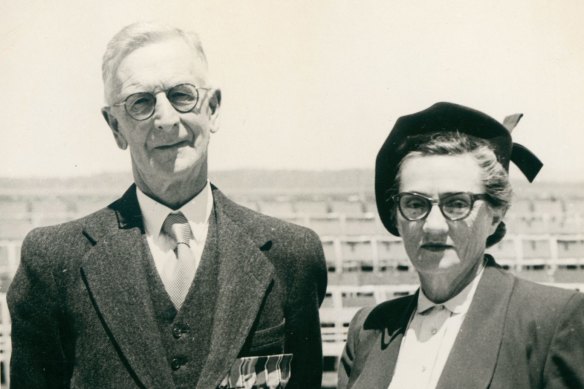This was published 4 years ago
Opinion
War Memorial must explore darker side of Australia at war
By Frank Bongiorno
We all went to school, so there is never any shortage of education experts. Teachers spend years learning to be teachers, but many of us feel fully qualified to tell them how to do their jobs.
Museum curators suffer similarly. Like teachers, they are fully qualified professionals, often with PhDs. A senior curator in a major museum will have been years on the job with multiple exhibitions behind them.

Australian War Memorial director Matt Anderson.Credit: Alex Ellinghausen
Don’t be deceived by the apparent simplicity of the label, the object and the glass case in which it sits. None of it happens by magic. Binge-watching The Crown does not qualify you to mount an exhibition.
Yet when Prime Minister Scott Morrison was asked about how the Australian War Memorial should respond to the Brereton report on alleged war crimes in Afghanistan, he reassured us that the War Memorial’s council had “oversight” and would work with the director Matt Anderson to ensure an appropriate response.
The council is chaired by Kerry Stokes, a businessman who has undertaken to help SAS members accused of war crimes and is currently bank-rolling a defamation action against Nine (owner of this masthead) by Victoria Cross winner Ben Roberts-Smith. Professor Peter Stanley, the War Memorial's former principal historian and a leading military historian, has called on Stokes to resign, arguing that he is “discredited by his uncritical association with the accused”.
The council also includes former Liberal prime minister Tony Abbott. Otherwise, its governing body comprises mainly military or ex-military personnel. There is nobody with specialist historical or museum expertise.

Scott Morrison and Australian War Memorial chairman Kerry Stokes at a Remembrance Day ceremony earlier this year.Credit: Alex Ellinghausen
This is in itself unfortunate for an institution that claims to combine “a shrine, a world-class museum, and an extensive archive”, with a mission to lead “remembrance and understanding of Australia’s wartime experience”. Yet the War Memorial is full of professionals – such as historians and curators – who help to achieve its goals.
The current director, Matt Anderson, is a public servant, not a museum curator. But he clearly has a good understanding of the only way an institution such as the War Memorial can operate professionally and independently. Curatorial decisions about how the War Memorial will respond to the Brereton report, Anderson explains, are to be left to “the subject matter experts”.
There is nothing exceptional here. Museums across the country operate this way every day. It is an act of faith in curators’ professionalism, but a similar act of faith we perform every time we visit a doctor, get on a plane, or give the accountant our tax papers. It is the same act of faith our leaders have performed every day of the pandemic when they have “followed the health experts’ advice”.

Illustration: Simon LetchCredit:
Yet we seem to think historians and museum curators, like teachers, are in a different category. They can’t be fully trusted. They don’t have real expertise. Anyone can write a museum label. Anyone can haul an object up from storage and stick it in a glass case.
We’ve been here before. Twenty years ago, the National Museum of Australia was stalked by an energetic campaign of the culture warriors, whom the Howard government ensured had solid representation on its council. As the museum moved towards opening day in its new building, right-wing council members were reviewing and criticising exhibition content. The National Museum was mired for years in unproductive culture wars, becoming a regular topic for “expert” analysis by the commentariat.
Recent directors such as Dr Mathew Trinca have skilfully extracted the National Museum from this mud heap, but every curator there likely understands that they are only ever a label away from more controversy. It is doubtful whether this is a healthy environment for any “world-class museum”.
The War Memorial’s problems are largely of its own making – or rather, the making of its previous director, Dr Brendan Nelson. He unwisely entered the controversy over possible war crimes in Afghanistan when criticising the media over its treatment of Roberts-Smith. Nelson dismissed it as an attempt to “tear down our heroes”. The War Memorial has also maintained a gallery on the war in Afghanistan, knowing full well that there were troubling matters seeping into the public sphere. If the War Memorial was unprepared for this moment, it has not been doing its job.

Australian War Memorial founder Charles Bean with his wife, Effie. Credit: Michael Jackson-Rand
There are wider issues at stake here. The Afghanistan war is not the only conflict in which Australians might have committed war crimes. There are incidents in Charles Bean’s Official History of Australia in the War of 1914-1918 that disclose breaches of the rules of war and, if they had occurred in recent conflicts, would be treated as worthy of full investigation.
The War Memorial makes much of Bean as its founder. It still claims to be pursuing his vision. But if it takes this mission as seriously as it says – if it is to become the “place of truth” proclaimed by its current director – it will need explore the darker side of Australians at war as an urgent matter of honest history and national self-reckoning.
Frank Bongiorno is a professor and head of the School of History at the Australian National University. He is a former president of Honest History.